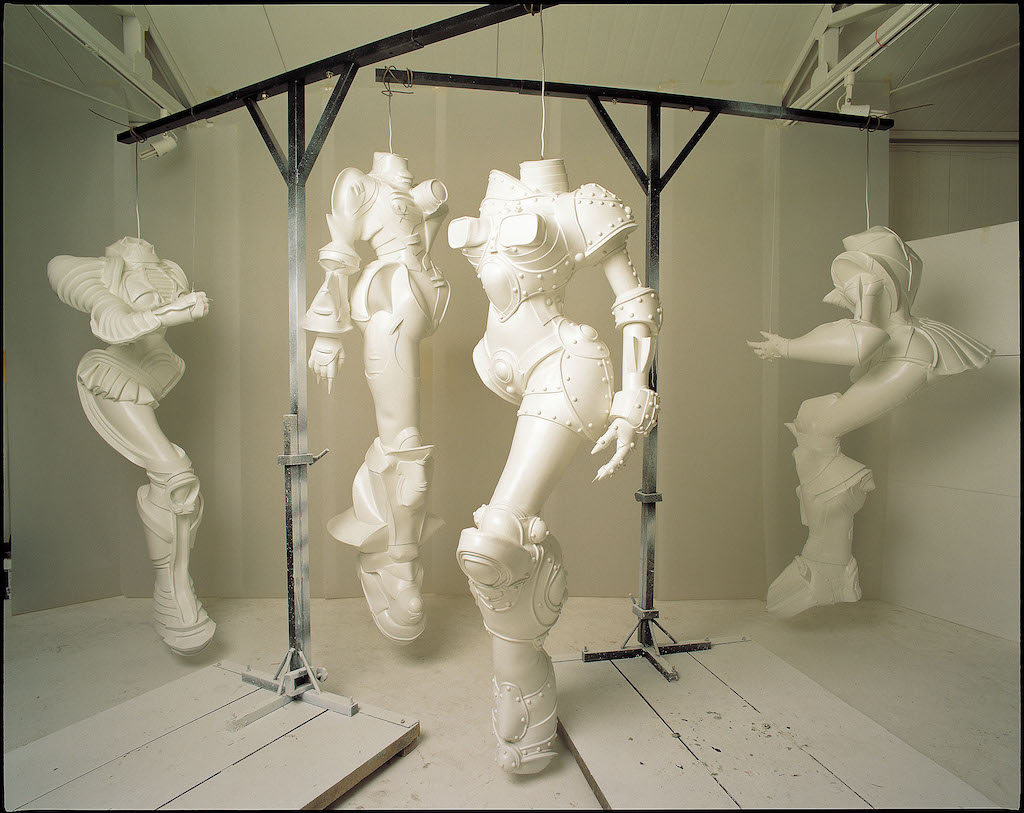PART III | BUL IN A CHINA SHOP: LEE BUL’S PARADOXICAL CYBORGS
INTRODUCTION
In contrast to the more realistic interpretation of the cyborg in Fan Xiaoyan’s work, Lee Bul’s cyborgs are entirely hybrid creations. Lee, widely considered the most internationally successful living artist in her home country of South Korea, made her debut on the Korean art scene in the late 1980s as a radical performance artist. From her early performance works to recent utopian cityscapes, Lee’s practice wrestles with concepts of utopia and dystopia, the female body, and the body’s interaction with technology, all of which are reflected in her cyborg works. In this section, I investigate how Lee responds to the male gaze and how applicable cyborg theory is in an interpretation of her work. I argue that in the context of theory and popular depictions of the cyborg, the series Cyborg W1-W10 (figure 26-35) embodies some of the goals of cyborg theory, but ultimately reveals its limits in an East Asian artistic context. Additionally, Lee’s sculptures critically interrogate gendered representation and the presence of the male gaze in representations of the cyborg body, but the interpretation of her works as feminist remains inconclusive due to the multiple possibilities of display.

